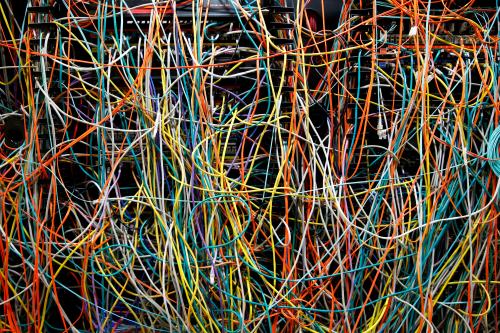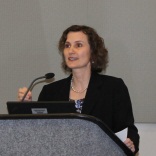This is the second blog in a three-part Future Development series on technological change in Europe, digital technology and productivity gaps, and Greece’s digital future.
Half of the differences in GDP per capita across countries are because of productivity, the efficiency with which firms transform inputs into outputs. Within a country, productivity differences can also be large across firms, even within narrowly defined industries. For reasons related both to growth and inequality, this is relevant for policy. There is growing evidence that in explaining overall productivity growth, productivity increases within existing firms are more important than the reallocation of resources between firms or the entry and exit of firms. And the adoption of new technologies by existing firms is a big part of productivity differentials.
The question is whether the latest wave of digital technologies has been associated with shrinking or expanding productivity gaps between firms. In a background paper for “Europe 4.0: The Promise of Digital Transformation,” a forthcoming World Bank report, we find that this depends on whether or not the technology in question is scale-neutral. So the answer, at least in Europe, is that it depends on the technology. We find that it is important to distinguish between three types of technology: informational, operational, and transactional. Informational technologies use the exponential growth of data to reduce the cost of computing; transactional technologies combine data with market exchange to digitize business models; and operational technologies combine data with automation in “smart” production processes.
Informational technologies are associated with smaller productivity gaps between firms
The use of informational technologies seems to be associated with a smaller productivity gap between large and small firms. Figure 1 illustrates this for cloud computing. In information and communication services, the sector where this technology is most widespread, countries with a higher share of firms that use cloud computing have smaller gaps in labor productivity between large and small firms. In sectors that don’t use this technology much—such as construction, printing, and fabricated metal products—we do not see this association.
Cloud computing appears to disproportionately benefit small firms by eliminating upfront capital expenditures associated with information storage and exchange. Cloud services reduce hardware needs for file storage, data backup, and software programs. They also consolidate applications, which reduce the need to buy multiple desktop software offerings. In addition, cloud applications are remotely set up and updated by the vendor, which renders in-person installation and maintenance of hardware and software redundant.
Transactional technologies are also associated with smaller productivity differentials
Our findings suggest that the use of transactional technologies is also associated with a smaller productivity gap between large and small firms. Figure 2 shows this for online sales. In accommodation services, the sector where this technology is most widespread, countries with a higher share of firms that use online sales are also characterized by a smaller gap in labor productivity between large and small firms. But there is no such association in sectors that use this technology the least: construction, real estate, and professional services.
This is consistent with the fact that scale-neutral digital platforms favor small firms by reducing the fixed costs of entering new markets. This relates to a reduction in information asymmetries that, in turn, reduces the costs of matching buyers and sellers all over the world. For example, there is evidence—across 61 countries and 40 product categories—suggesting that that the impact of distance on cross-border trade flows is about 65 percent smaller for eBay transactions relative to total international trade.
Operational technologies are associated with larger productivity gaps between firms
The use of operational technologies is associated with a larger productivity gap between large and small firms. Figure 3 illustrates this for the intensity in robot use. In motor vehicle manufacturing, the sector where this technology is most widespread, countries with a higher intensity of robot use are also characterized by a larger gap in labor productivity between large and small firms. There is, however, no such relationship in the apparel sector, which uses this technology the least.
This result is consistent with the fact that much like other physical capital, the cost of implementing a robot application is largely fixed in nature and later installations of the same type can be made for a fraction of the initial cost. These fixed costs are a source of significant economies of scale in robot use, which is likely to benefit larger enterprises. However, this is not necessarily true for all operational technologies. Scale is expected to matter less with 3-D printers and could lead to dispersed activity, whereby even small firms can access international designs and print them locally.
Policymakers in Europe looking for quick ways to narrow productivity gaps with the United States and stay ahead of East Asia—while keeping industrial relations at home amicable—should be sure to understand the differences among digital technologies. It seems to matter whether or not a new technology reduces the cost of processing information, if it merely facilitates market transactions, or if it radically alters the arithmetic between men and machines.









Commentary
Do digital technologies widen productivity gaps?
April 23, 2019